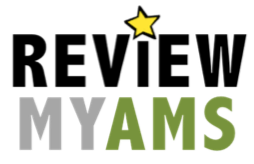Business model doesn't support timely customizations
We are using the most recent version after having upgraded about a month ago. The initial implementation of the software was done 4 years ago and preceded many of the staff currently here. Much to our disappointment, the requirements were not properly scoped out and we were left to fix up the issues by developing customization s so that we could conduct the regular order of business. Unfortunately, ACGI's business model relies mostly on use of its base product so expect to wait 6 months to a year to get any action or traction on proposed changes to their base model. Their business model provides little access to the engineers who are actually doing the work so your organizations priorities must be constantly internally reshuffled and re assessed to make sure your tickets receive appropriate action. This is because the tickets are then re-shuffled across clients who have limited access to a singular group of engineers who begin iterations "every two weeks" which is very similar to a general contractor telling you your home improvements will take "two weeks." This almost never happens. In addition, the ticketing system is done through a very complex portal where multiple criteria must be completed with tickets being assigned to "epic tickets" and watchers being assigned to be looped in. Make sure you nail down your user acceptance criteria verbatim in the ticket, despite what phone calls you have with the business analyst or technical lead, there is no guarantee your discussions will be accurately captured in the user acceptance criteria. And sometimes when its your turn to get your ticket done, the engineer will read the user acceptance criteria and ask your technical or business analyst to confirm something. More than likely, because of the lapse of time from when you scoped out the requirements, your technical lead likely doesn't remember - and will ask you, again what you wanted because the engineer will know that making a change will impact something neither of you thought of. Or sometimes they won't raise the flag at all and you will find out in testing. This pushes the timeline for completion back even more. In addition, users must regularly check a portal for release notes and then read them to know what has or hasn't changed in any given version. Upgrades are not included in the initial pricing and must be paid for each time. Monthly hosting fees are significant and do not include training or in some cases, getting on the phone to ask a question. You will pay for that. A wiki is provided to build documentation that aligns business process and configuration and this is a nice feature. You should plan to have at least one staff person manage this system as their full time job - know it, manage it, and manage ACGI - to make it valuable and worthwhile. While the staff there seem to try hard and are generally very nice people, they are limited in their capacity to work outside of the model. Unless a ticket is assigned an "Asset Blocker" (impacts revenue), it most likely will not get an immediate response or any action taken inside of a week or two. In general, it has made "AMS life" for us quite challenging in the short term and because of that we must pursue other options to meet our long term business needs.

